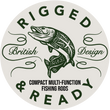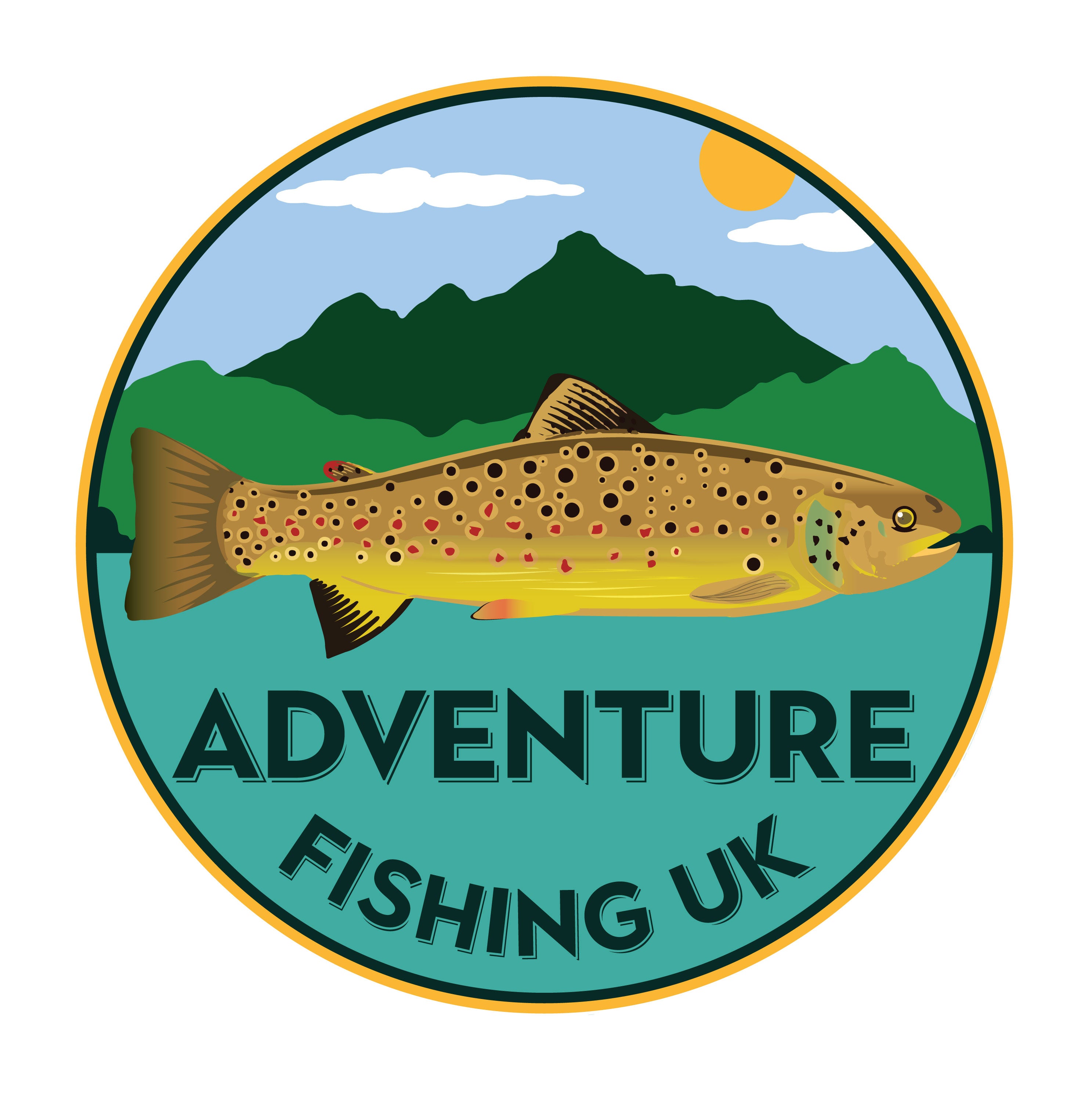Fly Fishing Isn’t Just for Trout

Here’s Why You Should Try It for Carp, Chub, and Pike.
When it comes to fly fishing, most people picture idyllic crystal-clear rivers with dry flies drifting downstream after trout or salmon. But the world of fly fishing is much broader than that. If a fly resembles something a fish normally eats — be it a beetle, a damsel nymph, or even a distressed minnow — it’s game on.
Species like pike, carp, chub, and even catfish are all highly capable fly takers, especially when approached with the right setup and a bit of creativity. Fly fishing doesn’t need to be reserved for the Highlands or the Test Valley — it can be just as effective (and a lot more fun) on your local lake, canal, or river.
Not All Flies Are Equal
Fly patterns vary just as much as the species you’re targeting. Small, delicate dries and nymphs still have their place — but chucking out a 6-inch baitfish imitation to tempt a pike or catfish? That’s a different game altogether.
These larger, bulkier flies often require heavier rods and lines (think 8wt or higher) and a shorter, punchier casting style.
You’re not aiming for a gentle presentation — you’re showing a predator something worth chasing down. Think articulated streamers, flashy baitfish patterns, and foam-bodied monsters that move water and grab attention.
Also Read: FREE FISHING
Surface Carp: Fly Fishing’s Best Kept Secret
If there’s one style of fly fishing that screams summer, it’s surface feeding for carp. There’s nothing quite like it — calm evening water, warm air, and the unmistakable suck... suck... sound of carp slurping floating baits off the top.
Fly fishing for carp is hugely underrated. These fish fight hard are very cautious and catching them demands skill and practice. A standard 5 or 6 weight fly rod will do the job on smaller carp. If you’re in waters where you might hook a proper freight train, then upgrade to an 8 or 9 weight and hang on.
The Method: Dog Biscuit Imitations
The key to carp on the fly? Matching the hatch — in this case, floating dog biscuits.

Dog biscuit flies are foam-bodied imitations designed to look like the surface mixers anglers often feed to get carp going. They float well, land with a satisfying plop, and tempt carp to rise and inspect. Cast near active fish, keep disturbance to a minimum, and wait for that slurping sound.
Pre-feed is essential. Fire out a few real biscuits to build confidence and keep the fish moving. Keep them coming every few minutes to maintain interest — a catapult comes in very handy for this.
When it comes to leader and tippet, no need to overthink it. Just use around 2 metres of 9lb zig line tied directly to your floating fly line. It’s simple, strong, and perfect for turning over those foam flies without the faff of tapered leaders or complex setups.
Top tips:
• Pre-feed consistently to hold fish in the area
• Keep your fly among the real biscuits for better takes
• Don’t strike too early — wait for the fish to fully suck in the fly, but be ready to react fast, as they’ll spit it out just as quickly. A swift, controlled lift is all you need — no need to strike hard.
Watching a carp sip down your fly like it’s part of the buffet is a proper adrenaline spike — and once hooked, it’s game on.
Also Read: FISHING ROD FOR HIKING
Chub on the Fly: Riverbank Thrills and Packraft Stealth
If carp are the kings of summer surface fishing, chub are the crafty princes of the riverbank. Found in many UK rivers, chub are bold, curious, and surprisingly willing to take a fly — especially when food is drifting downstream.
Chub fly fishing is all about stealth and presentation. These fish spook easily, so you need to keep your approach low, your casts precise, and your patience dialled in.
While they’ll take small dries and streamers, one of the most effective tactics is to use a large fly that resembles a beetle, ladybird, spider etc. Chub are incredibly tuned into the sound and vibration of something plopping into the water — they’ll turn from undergrowth or roots to investigate.

Chub love cover. Overhanging trees, root tangles, and deep shadows are their territory — and they're not exactly ideal for clean casting. You often end up in the branches, and once you're tangled, the fish are gone.
Accessing these tight, shady spots can be difficult from the bank, especially when high vegetation or snaggy swims block your path. But fishing from a packraft opens up a whole new dimension — you can quietly position yourself beside those hidden lies and cast without ever disturbing the fish.
For this kind of mobile, exploratory fly fishing, the Rigged & Ready Infinite Fly rod is spot on. Lightweight, compact, and travel-ready, it has the delicacy for subtle dry fly work, but enough backbone for when a river chub goes barrelling for the roots.
Pike on the Fly: Big Flies, Big Hits

A Norfolk Broads Pike, caught from a packcraft utilising the short length of the X5 Max C-P as a Fly Rod.
If you’ve never experienced the explosive take of a pike on the fly, you’re missing out. These apex predators are tailor-made for fly anglers who like things a little more dramatic.
Fly fishing for pike is a different beast. You’re not matching the hatch — you’re provoking a reaction. It’s all about movement, vibration, and profile. The flies? Think big, flashy, and loud. Articulated baitfish patterns, large streamers, and deer hair divers are all excellent choices.
Because these flies are bulky, you’ll want a 9-weight fishing rod or higher and a wire trace or strong Fluorocarbon leader.
Look for pike:
• Around weed beds
• Near drop-offs
• Lurking around structure like submerged snags
A slow, pulsing retrieve can work wonders — and don’t be surprised if the strike happens within feet of your rod tip.
And when it comes to landing and unhooking these toothy predators, do it right. A Rigged & Ready unhooking mat is a must — not just for proper fish care, but to keep them calm and safe while you remove the hook. Respect the fish, and they’ll be there to fight another day.
Final Thoughts: Fly Fishing Without Limits

Fly fishing doesn’t need to be limited to remote rivers or exclusive trout beats. With the right flies, thoughtful presentation, and a bit of adventurous spirit, you can catch a huge range of species — from surface-sipping carp and opportunistic chub, to hard-hitting pike and even the occasional urban canal surprise.
Whether you’re creeping down the bank with a beetle fly, drifting a packraft into overgrown corners, or watching a foam dog biscuit disappear in a gulp, the thrill of fly fishing lies in its adaptability.
Add in the ability to pack light and fish anywhere, and you’ve got everything you need to explore the less-fished side of the sport. Just don’t forget the essentials — strong line, the right rod for the job, and a good unhooking mat to protect your catch.
A great all round rod that is light enough for stalking and heavy enough for the biggest of fly takers is the X Max C-P. Perfect for fly fishing for Chub, Carp and Pike.
Because fly fishing isn’t just for trout.











